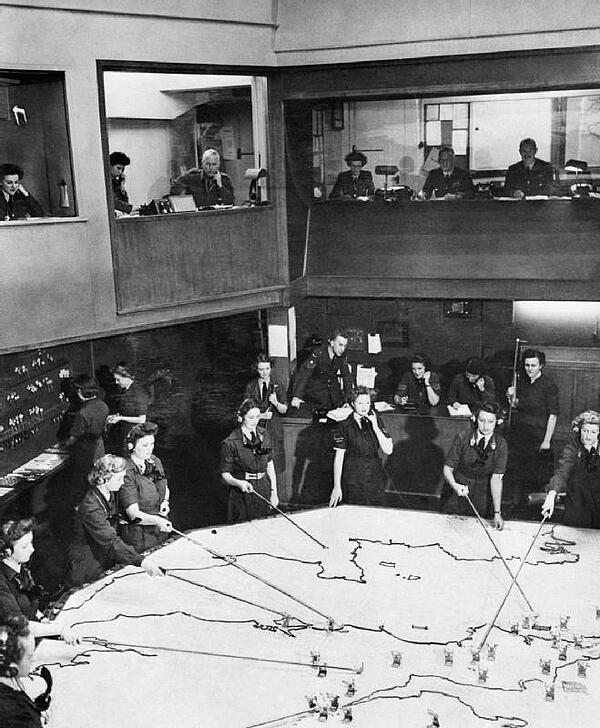Fighter Command
Sir Hugh Dowding established the Fighter Command in July 1936 to allow specialised control of fighter planes, but it wasn't until 1940 during the Battle of Britain - when the Few held off an attack from the Luftwaffe - when the command really gained fame.
The role of Fighter Command began to increase towards the later half of the 1930s, when Hitler became set on European expansion and tension across the continent started to swell. It was in 1936 when these tensions really earned the attention of the British military, and this led to the reorganisation of the RAF and the Fighter Command's headquarters at Bentley Priory in Middlesex.

Fighter Command was arranged into different groups, with each one given responsibility for protecting and providing support in a certain geographical part of Britain:
- 10 Group was commanded by Air Vice-Marshall Sir Quintin Brand and covered Wales and the south-west of England.
- 11 Group was commanded by Air Vice-Marshall Keith Park and covered London and the south-east. 11 Group did a large amount of fighting in the Battle of Britain.
- 12 Group was commanded by Air Vice-Marshall Trafford Leigh-Mallory and covered the Midlands, East Anglia and northern England up to Yorkshire and Lancashire.
- 13 Group was commanded by Air Vice-Marshall Richard Saul and covered parts of northern England not covered by 12 Group, as well as southern Scotland and Northern Ireland.
As well as splitting Fighter Command into groups, the RAF also subdivided each group to make it easier to gain tactical control in each area. Each of these groups was known as a sector and would possess its own fighter base and satellite bases in their specified region. The main fighter bases, which acted as hubs for each sector group, would feature an operations room with maintenance and repair facilities to ensure the plane in that specific region were always ready to fly.
Although each group and sector covered its own region they had at their core Bentley Priory, which was positioned centrally to provide all Fighter Command groups with information from the Royal Observer Corps on approaching Germans and radar stations. The commanders based within the priory would choose which groups to inform based on their information and, once they were activated, the group commander would take control over his geographic group and decide which sectors should be employed.
This structure was known as the Dowding System, Fighter Command’s Commander-in-Chief Air Chief Marshal Sir Hugh Dowding, and used radar technology to provide pilots with the most up-to-date information possible, while also allowing effective control for those on the ground. The success of this structure of command was put to the test during the Battle of Britain, but its efficiency ensured that the Fighter Command saw off the German forces.
Once the Battle of Britain was won, the Fighter Command continued to be involved in World War Two, but its impact on the outcome of such a famous battle had already ensured it would be celebrated for many decades to come. Winston Churchill summed up its success in his tribute to the men of Fighter Command:
“Never in the field of human conflict was so much owed by so many to so few.”
See also: Fighter Command Groups
MLA Citation/Reference
"Fighter Command". HistoryLearning.com. 2025. Web.
